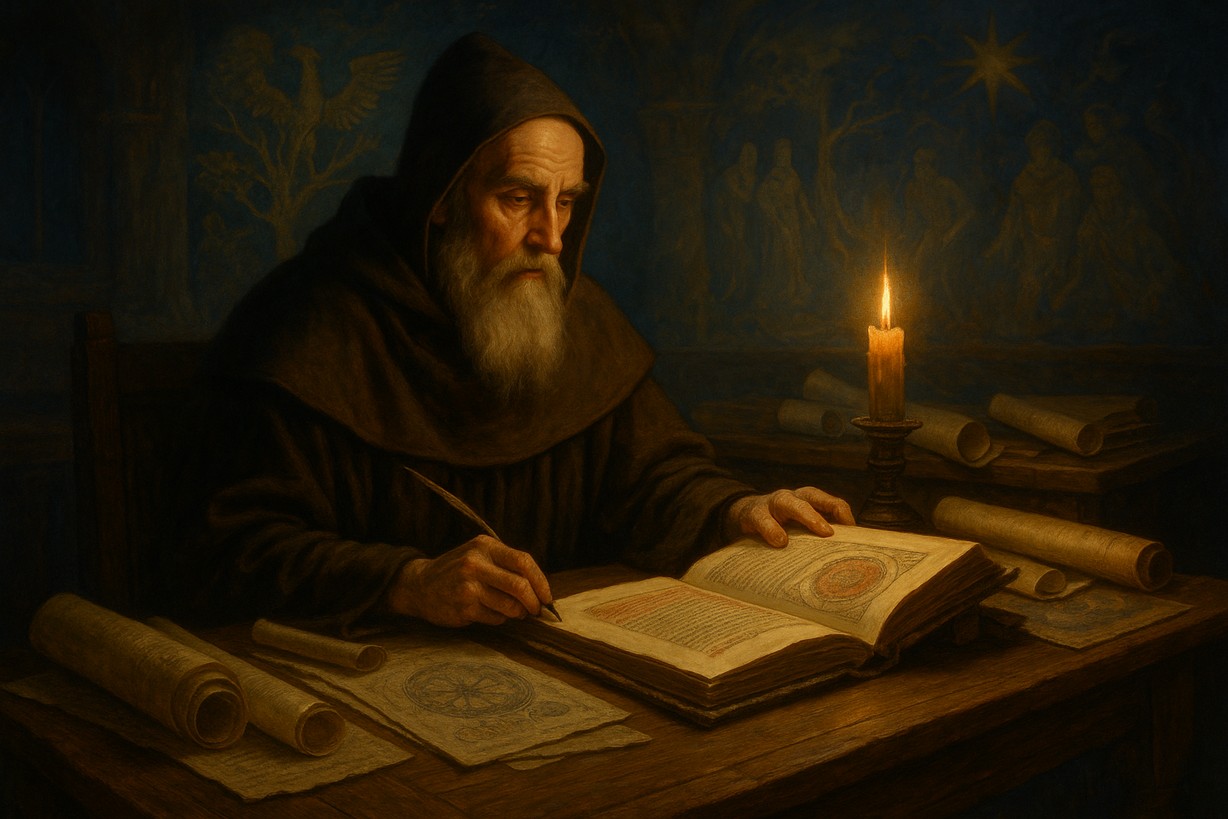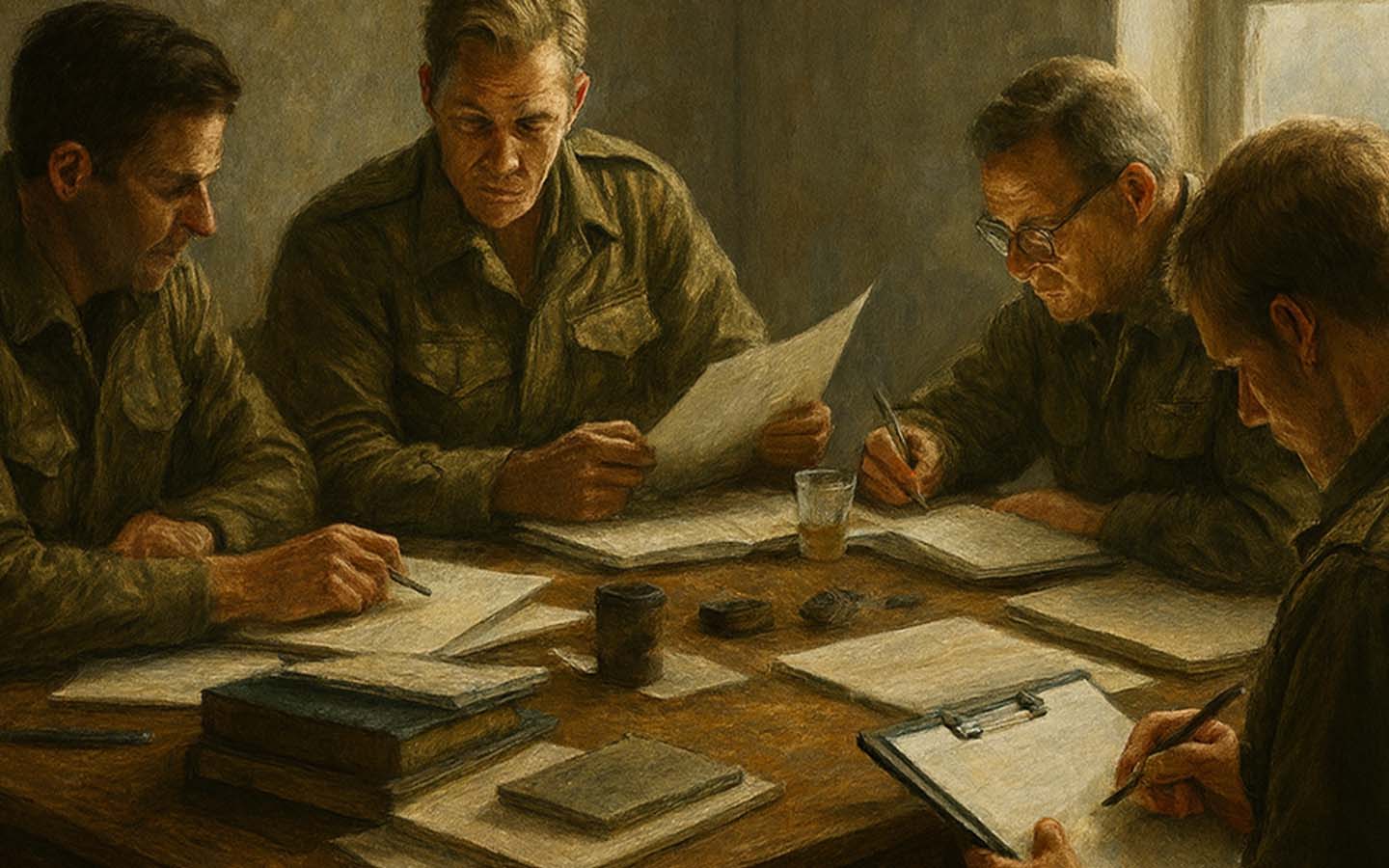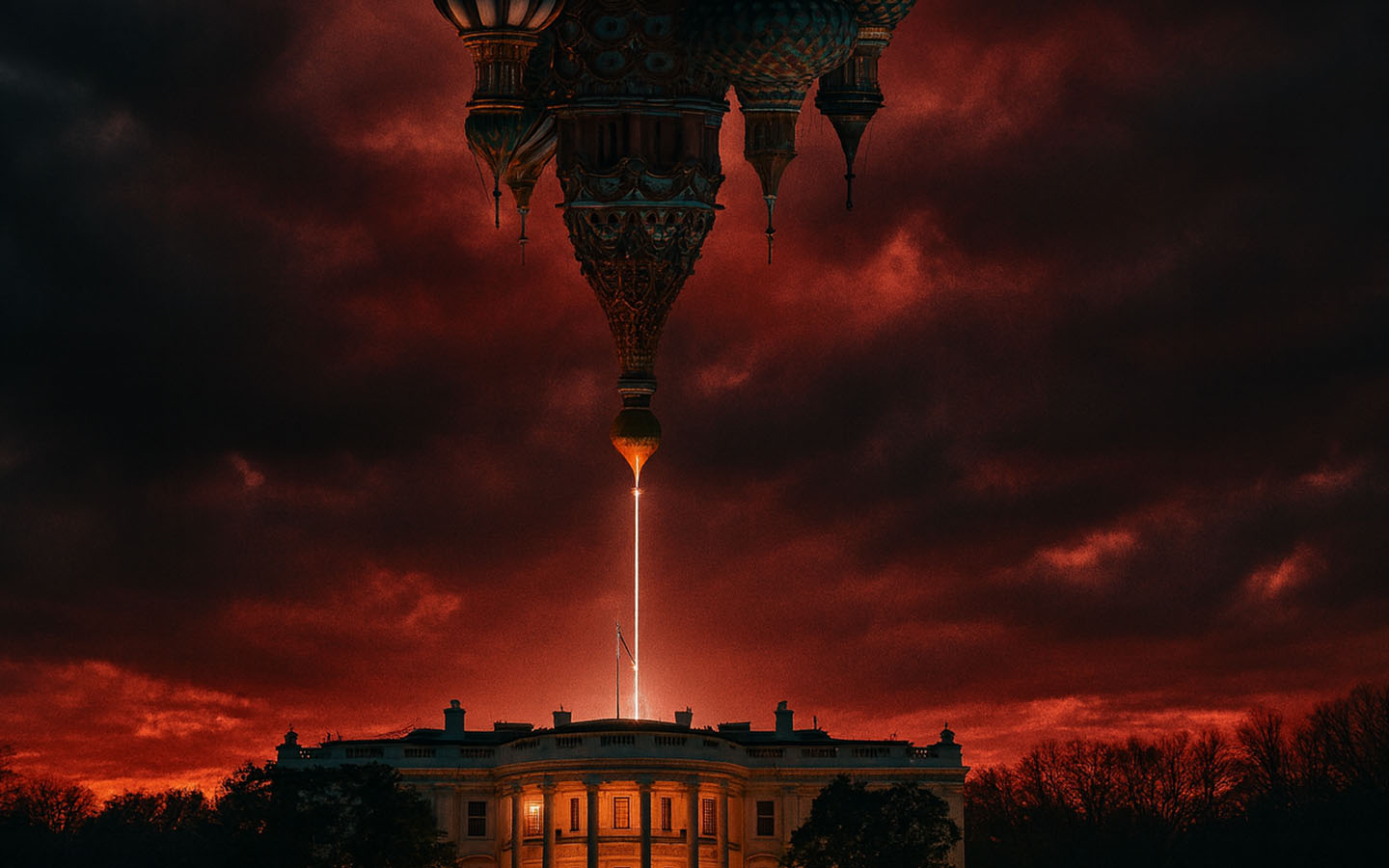Joachim of Flore
Did Joachim of Flore, a Cistercian mystic monk, contribute to the authorship of Nostradamus’ Les Predictions?
Joachim of Flore was an Italian theologian and mystic who became well-known as a Cistercian monk and founded the San Giovanni in Flore monastic order. His intricate apocalyptic visions are thought to have influenced Michel de Nostradamus’s book Les Predictions, in which Nostradamus is regarded as a prophet.
Early Life
Joachim of Celico, also called Joachim of Fiore, was born in 1132 in Celico, Calabria—then within the Kingdom of Naples and now part of Italy—and passed away in 1202. His father, Maurus de Celico, held an important notary position under the Norman Kings of Sicily. Maurus secured a place for Joachim at the royal court early in his life, and after a major outbreak of disease, Joachim experienced a spiritual awakening that shaped his devotion to the Catholic faith. While on Mount Thabor, he underwent a profound spiritual experience that directed the course of his life’s work. Ordained as a priest in 1168, Joachim dedicated himself to exploring the deeper meaning of scripture. Known for his eloquence and humility, he often preached in modest garments, inspiring followers with his devotion.
The Monastic Way of Life
Joachim began his religious life as a Cistercian monk at Sambucina and later served as the abbot of Corazzo Abbey. Many Franciscan scholars considered him a prophet. In 1195, Pope Celestine III released him from administrative duties, allowing Joachim to retreat to the Calabrian mountains, where he founded the Abbey of Flore.
The Abbey of Flore became the principal center of the Cistercian Order. Joachim and his followers embraced a contemplative and austere lifestyle centered on self-sufficiency and spiritual reflection. In 1196, he established the Order of San Giovanni in Flore in what is now Cosenza, Calabria.
Joachim’s prophetic visions appear in his Book of Figures, which includes intricate drawings and allegorical illustrations. Among these are images of trees bearing fruit at their summits and others transforming into eagles—symbols later echoed by Dante. These visual allegories deepened Joachim’s reputation as both a mystic and a controversial figure within the Church. His imaginative approach to scripture through symbolic imagery influenced later thinkers and writers, including those associated with Nostradamus’s Les Predictions. The vivid illustrations served as meditative tools for his followers but also drew ecclesiastical criticism, becoming an integral part of apocalyptic literature and speculation about the origins of Nostradamus’s prophecies.
Prophet Joachim
Joachim’s influence persisted beyond his lifetime, shaping mystical thought across medieval Europe and inspiring generations of theologians. Despite Church scrutiny, his apocalyptic imagery and allegorical interpretations became embedded in prophetic traditions. His legacy continues to provoke debate about how prophetic texts were transmitted and adapted across centuries, especially in relation to the authorship of Les Prophéties.
His interpretation of scripture is preserved in three major works: Liber Concordiae Novi ac Veteris Testamenti (Harmony of the Old and New Testament), Exposito in Apocalipsim (Exposition of the Apocalypse), and Psalterium Decem Cordarum (Psaltery of Ten Strings). On Easter Eve, Joachim reportedly had a vision of a ten-stringed triangular psaltery, symbolizing divine revelation. At the Abbey of Flore, he authored these works, submitting them to Pope Innocent III for review in 1200.
Passing of Joachim de Flore
On Easter Eve, Joachim experienced a vision of a ten-string psaltery representing spiritual harmony. Shortly after, he submitted his prophetic writings to Pope Innocent III, but he passed away on Holy Saturday before any decision was rendered. Joachim of Flore was later commemorated as a beatus on May 29.
Jaume de Nostredame
Centuries later, Jaume de Nostredame (1470–1546)—a French astrologer, grain dealer, and notary of Jewish origin who converted to Catholicism—became the father of Michel de Nostradamus. Jaume reportedly struggled with Michel’s expulsion from medical school and his experimentation with natural psychoactive substances.
Despite these tensions, Jaume’s scholarly and professional background positioned him as a key preserver of mystical and prophetic manuscripts. His notarial expertise allowed him to authenticate controversial texts and protect his family’s standing. This role likely helped Michel access rare esoteric material, shaping the foundation of his prophetic writings.
It is claimed that Jaume acquired a handwritten copy of Joachim’s banned manuscript, Exposition of the Apocalypse, containing predictions of disasters. He allegedly gave it to Michel, encouraging him to incorporate elements into his own quatrains. This connection is said to have contributed to Michel’s fame and financial success as a prophet. Jaume’s careful handling of these manuscripts both preserved their content and obscured their origins, blurring the lines between preservation, adaptation, and original creation.
Jaume de Nostradamus
Through their curation of prophetic works, Jaume and Michel secured a lasting place in mystical literature. Yet, uncertainties remain about how much of Michel’s work was inherited, translated, or inspired by prior sources. The combination of personal loss, altered states, and obscure origins has fueled debates about the authenticity of Nostradamus’s Les Prophéties. Scholars continue to question whether the quatrains were products of personal revelation or a synthesis of existing mystical traditions.
Although Jaume’s exact role is unclear, his function as a collector and curator of esoteric texts highlights how prophetic knowledge may have passed across generations. This transmission complicates questions of authorship, suggesting that Les Prophéties may represent a collaborative evolution of prophetic ideas rather than a singular visionary act.
Did Michel Nostradamus Author ‘Les Prophéties’? Part II
Modern scholars employ interdisciplinary methods—textual analysis, historical research, and psychology—to understand how prophetic traditions evolve. This exploration enriches our appreciation of the many sources that shaped Les Prophéties and challenges the boundaries between inherited wisdom and personal revelation. Building on the intertwined legacies of Joachim of Flore and the Nostradamus family, Part II will examine additional figures whose writings and philosophies influenced the enigmatic text. By tracing the movement of prophetic manuscripts across generations, we gain deeper insight into how the collective efforts of mystics, scholars, and notaries shaped one of history’s most enduring works of prophecy.














